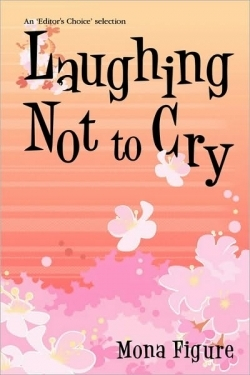Laughing Not to Cry
There’s much to cry about for Dorothy Brainerd Rutherford, the heroine of Mona Figure’s novel, but laughs? Not many. Readers, on the other hand, will be entertained.
After her husband vanishes with their life savings, Dorothy spends the next eight years “trying to keep body and soul together.” Readers are introduced to Dorothy as she walks near her riverside farmstead in Connecticut, a walk interrupted by Dorothy’s senile father, the Colonel, “running toward Earl Vining’s farm in his baseball cap and nothing else.” It seems, Earl and the Colonel have a history.
Dorothy has troubles. She cannot keep an in-home caretaker for her father and cannot bear to move him to a veterans home. She’s missing work and in danger of losing her teaching position thanks to the machinations of Oliver Vining, the scheming school superintendent and Earl’s nephew. Her once proud and prosperous ancestral farm lies in near ruin.
Dorothy may not be laughing, but readers will smile at assorted ribald and off-kilter moments. Laughing Not to Cry also introduces an entertaining cast of characters. There’s Bates, the principal at the high school where Dorothy teaches, whose marriage explodes, the catalyst being the unhappy wife of Judd, the younger brother of Dorothy’s first husband, Adam, killed in Vietnam. There’s Danny, restaurant cook and drag queen, who looks remarkably like the Colonel’s late wife. There’s Nick, Dorothy’s godson, whom she raised after his mother chose drinking and partying over parenting. “She’s better than a God-damned X-rated movie,” Nick says of his mother. Readers will also appreciate Alicia, a too-good-to-be-true mid-year replacement teacher, who loves Nick, but he’s embarrassed again when his mother, Coco, begins an affair with the town’s new Catholic priest.
Certain that Oliver Vining is fabricating a reason to fire her, Dorothy, with Nick’s help, reopens the floral business her runaway husband, Harry, looted. Things progress nicely until Harry returns to claim half of Dorothy’s growing prosperity.
All the while, Figure’s writing moves the story forward, one exception being the introduction of Danny, where she veers off into the saga of his niece’s shotgun marriage, which destroys Danny’s family and sends him to Dorothy’s doorstep. Figure’s characters are well-drawn, with the exception of Maggie, Dorothy’s childhood friend. A reference to Maggie appears in the book’s third paragraph, and multiple times thereafter she’s identified as “France-dwelling,” “ex-model,” and semi-detached from Dorothy and Connecticut, but readers only see her through Dorothy’s eyes. That’s so even though Maggie plays a major role in Dorothy’s life – a role so big that Harry Rutherford says, “How do you think I felt, watching you and Maggie make over each other? Your eyes and nose were red for days when she left…I couldn’t figure out if you were buddy-buddies or lesbian lovers.”
Part suspense story, part chicklit, Laughing Not to Cry makes for a top-notch read, perhaps more for women than men, but it’s a good guess that most women, having followed Dorothy toward a happy ending, will want to pass Figure’s novel onto a reading friend.
Reviewed by
Gary Presley
Disclosure: This article is not an endorsement, but a review. The publisher of this book provided free copies of the book and paid a small fee to have their book reviewed by a professional reviewer. Foreword Reviews and Clarion Reviews make no guarantee that the publisher will receive a positive review. Foreword Magazine, Inc. is disclosing this in accordance with the Federal Trade Commission’s 16 CFR, Part 255.

